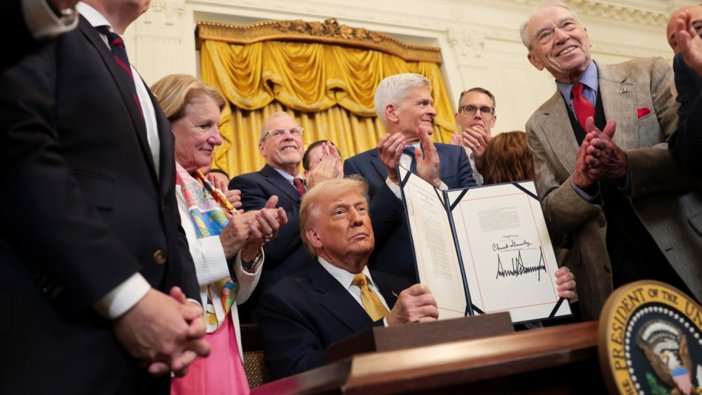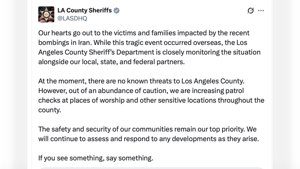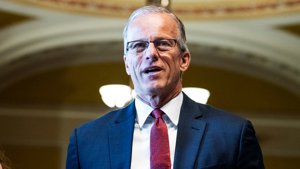
Trump Signs HALT Fentanyl Act Targeting Traffickers
Trump enacts law placing fentanyl analogues in Schedule I, aiming to curb overdose deaths with stricter trafficking penalties.
Trump Signs Landmark Fentanyl Law to Combat Opioid Epidemic
President Donald Trump signed the Halt All Lethal Trafficking (HALT) of Fentanyl Act into law on Wednesday, permanently placing fentanyl-related substances in Schedule I of the Controlled Substances Act. The move is a cornerstone of the administration’s strategy to fight the opioid crisis and crack down on drug trafficking networks.
The new law, which garnered bipartisan support in Congress, is designed to address a surge in overdose deaths by closing loopholes used by traffickers who modify fentanyl’s chemical structure to skirt prosecution. State attorneys general, led by Republicans, strongly advocated for the bill, calling it “vital” in a joint letter to lawmakers.
“When a Chinese chemist or a Mexican cartel chemist changes one molecule, they actually make it difficult for federal prosecutors to go after them,” said South Carolina Attorney General Alan Wilson. He emphasized that the law ends the “cat and mouse” game that has hampered legal action against traffickers of synthetic opioids.
Under the HALT Fentanyl Act, crimes involving fentanyl analogues will now trigger mandatory prison sentences. Previously, these substances were only temporarily classified as Schedule I drugs, meaning they had no government-approved medical use and carried stiff penalties for illicit handling. Now, the classification is permanent, creating a tougher legal framework for prosecutors.
Families and Law Enforcement Applaud, Critics Raise Concerns
The bill’s signing was attended by state attorneys general, congressional leaders, immigration groups, and families affected by overdose deaths. Among them was Gregory Swan, who lost his son Drew to fentanyl. “There is despair and there’s hopelessness. But we’ve been able to find some repose in going out and advocating,” Swan shared, holding a photo of his son at the ceremony.
Iowa Attorney General Brenna Bird defended the stricter sentencing guidelines, noting that these measures help protect victims and secure justice for communities. “I really think the only people that could be against [the HALT Fentanyl Act] would be the drug cartels,” Bird said, “because they have so much to lose by us cracking down on fentanyl and the money that they make by poisoning thousands of Americans.”
However, some civil rights groups and Democrats cautioned that the law could sweep up substances that are not harmful and warned that mandatory minimum sentences do not address the root causes of addiction. Liz Komar of the Sentencing Project argued, “It’s shocking that lawmakers still believe we can police our way out of a public health crisis — despite over fifty years of evidence to the contrary.”
The urgency behind the new law is underscored by statistics from the Centers for Disease Control and Prevention, which report that opioids and synthetic opioids are the leading causes of drug overdose deaths in the United States. Although overdose deaths declined in 2024, they remain the top cause of death among Americans aged 18 to 44.
Federal Crackdown Continues as Law Enforcement Makes Major Seizures
The HALT Fentanyl Act is part of a broader campaign by the Trump administration to reduce drug overdose deaths and disrupt illegal drug trafficking. Just a day before the signing, Attorney General Pam Bondi and Acting Drug Enforcement Administrator Robert Murphy announced major drug busts and significant seizures, including 44 million fentanyl pills and 4,500 pounds of powder this year alone. Federal authorities reported over 2,100 fentanyl-related arrests, highlighting the scale of the crisis.
Bondi issued a warning to the public: “A pill can kill.” The administration has emphasized that illicit fentanyl is sometimes mixed into legitimate medications, increasing the risk of accidental overdose for unsuspecting users.
As the new law takes effect, it aims to equip prosecutors and law enforcement with the tools needed to keep pace with traffickers and save lives, even as the nation continues to debate the most effective approaches to solving the opioid epidemic.






